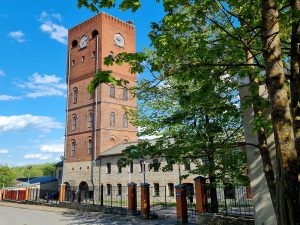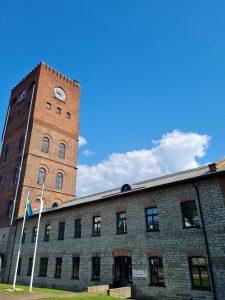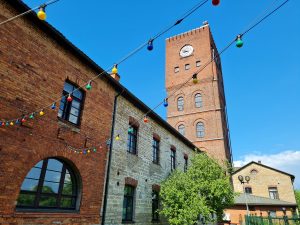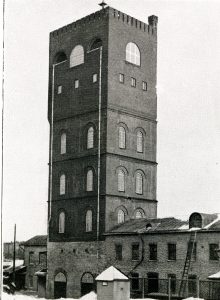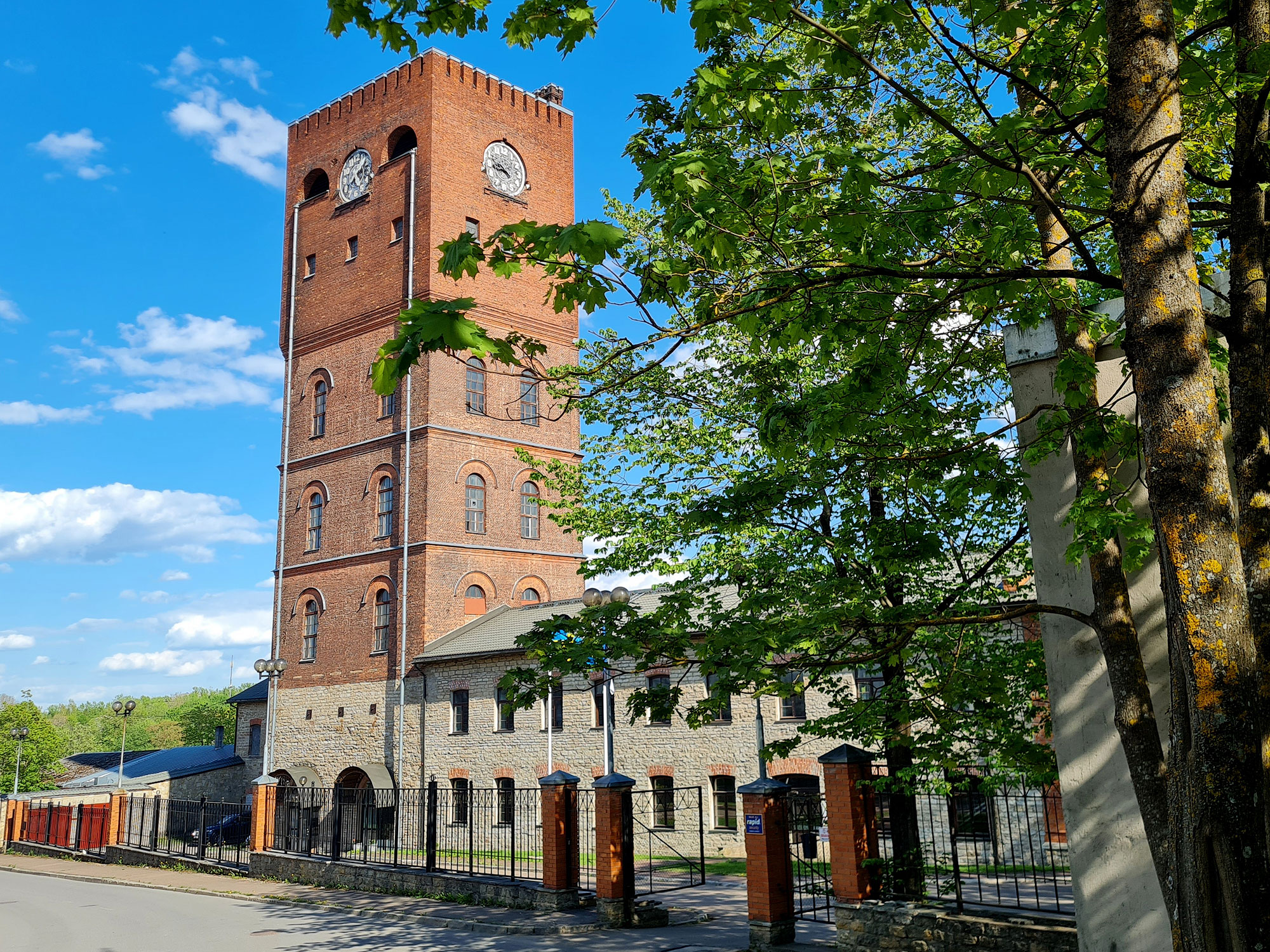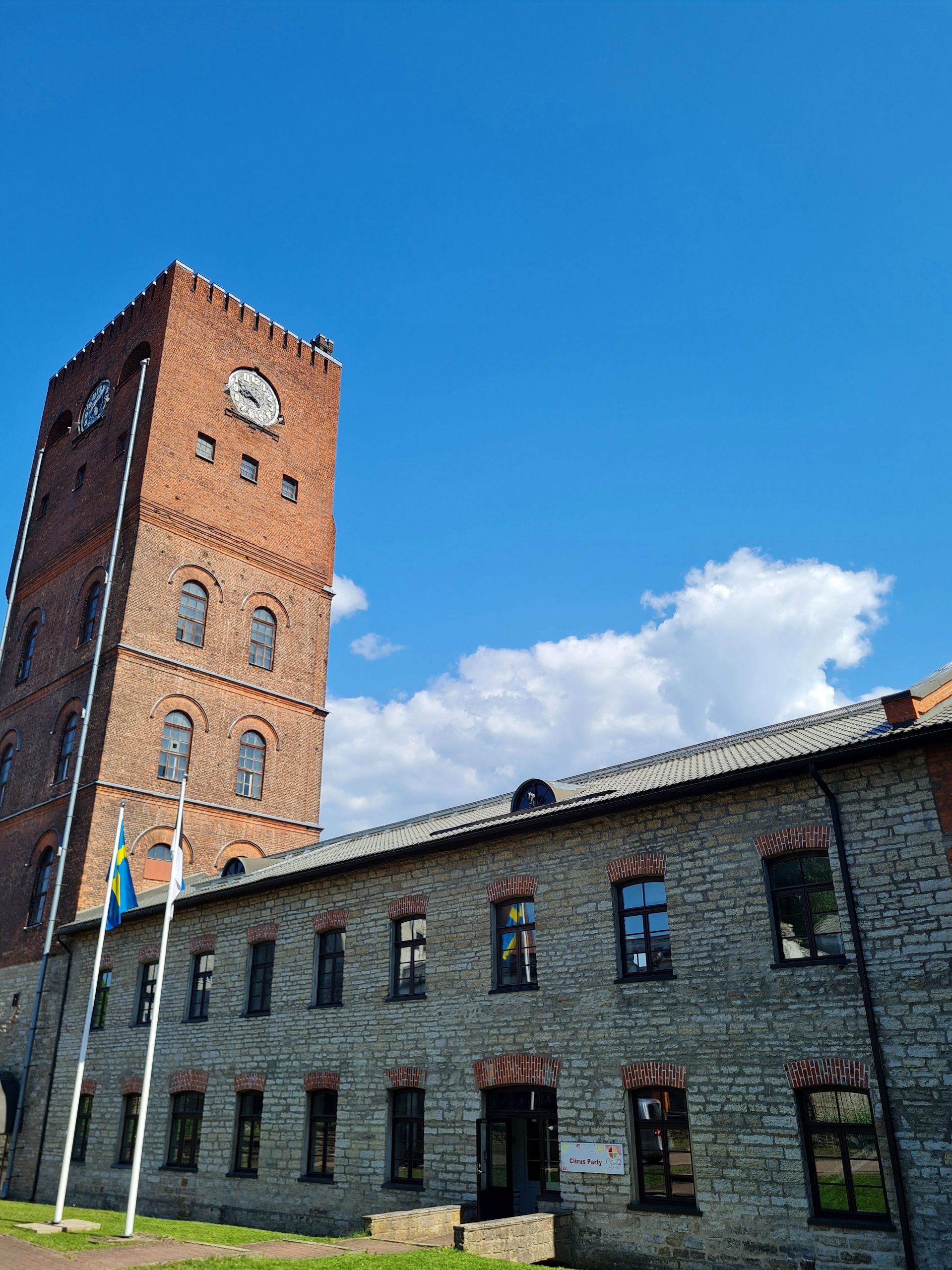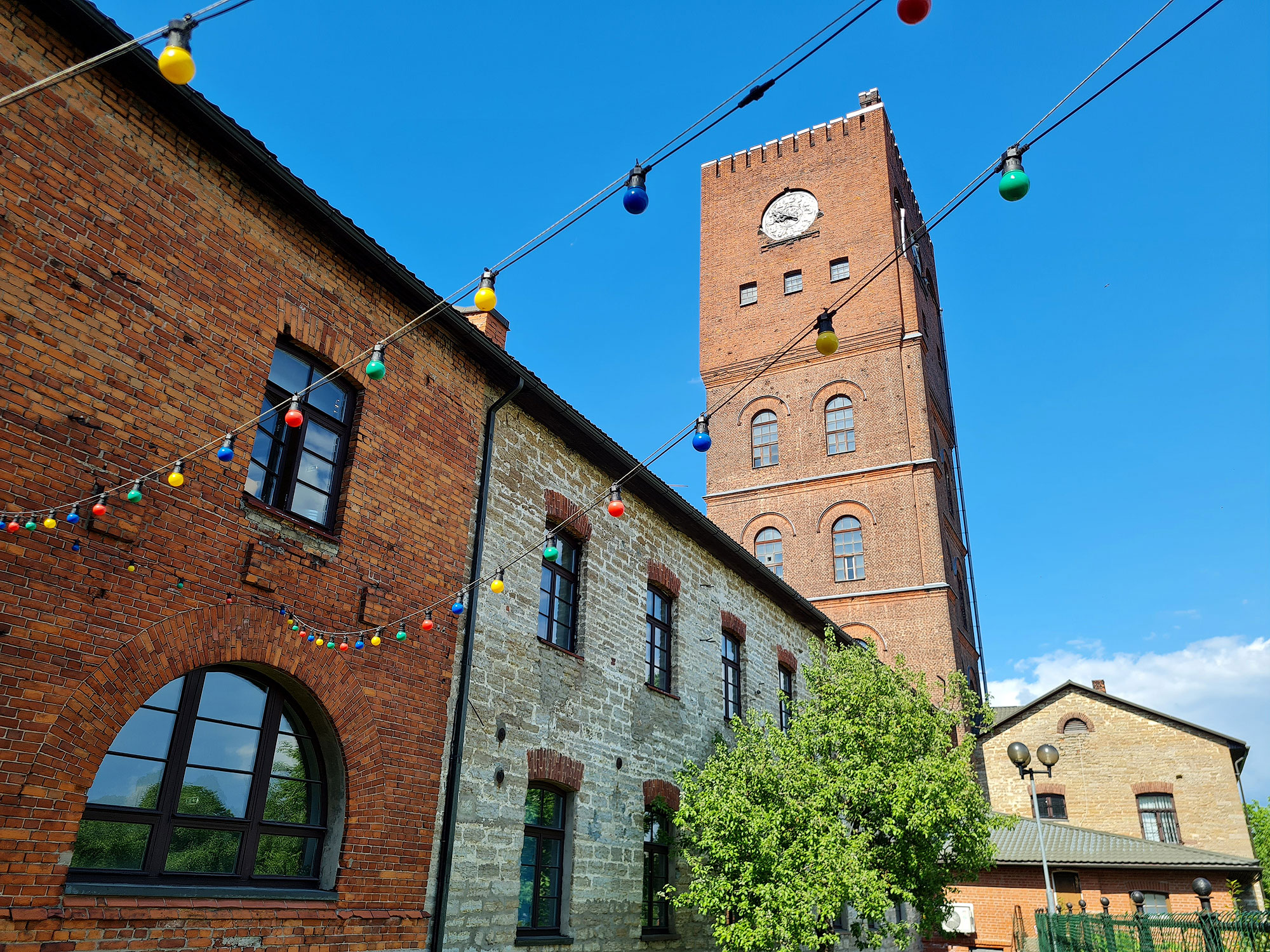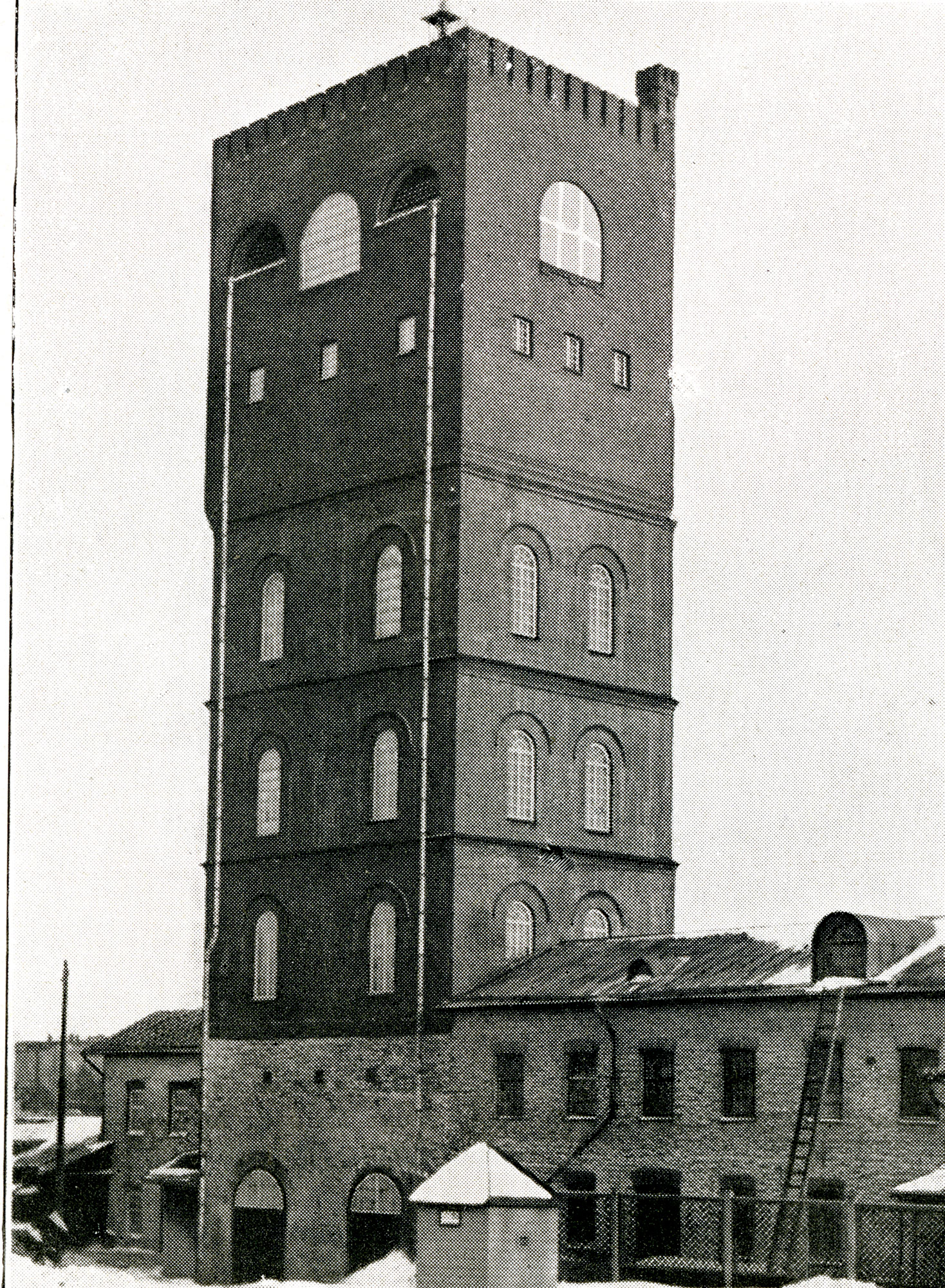Kreenholm water tower was built from local red brick according to the design of architect Paul Alisch. It took on its current look in 1897. The wooden water tower which had been in use before had reached its maximum capacity twenty years earlier.
The water tower, like other Kreenholm buildings, is a part of this area’s historical heritage. It resembles a medieval fortress tower with its arched windows and niches and the top, crowned with ‘teeth’.
Three years later, an electric clock that was extremely advanced for the period was installed in the tower. There were three more public clocks in Kreenholm at the beginning of the 20th century. They showed the time to go to work, to have lunch and to go home, although the guards in the barracks also announced the morning wake-up time. At the beginning of the 20th century, the working day started at 6 in the morning and ended at 6 in the evening. Lunchtime was 90 minutes.
Today adjacent to the clock tower buildings are offices. One of them is OÜ Narva Gate, which manages the premises of the Kreenholm area.
Kreenholm is the cradle of the Estonian revolutionary movement. One reason for that was a large number of workers there, both Russians and Estonians. The proximity to St. Petersburg influenced the revolutionary mood here too. The Narva strike of 1905 was particularly powerful. An interesting fact to know is that in Estonian there was no word for strike, so the German one came to use. There were thousands of people on the streets of Kreenholm at that time and the atmosphere was very tense. The events described in August Kimm’s autobiographical novel unfolded around the water tower and the Clock Tower Gate located next to it:
“So, powerful decisions were made in the market square and I went to the director to inquire – or more accurately, to demand an explanation. Together with more than a thousand men we walked from the market square towards the director’s house. We passed the barracks and finally reached the Clock Tower Gate, but at the Gate we saw soldiers armed with bayonets. At that moment, the wood carriers came from the wood yard with loads of 2-foot logs and turned around the Clock Tower Gate. When the protesters grabbed the logs and cobblestones and started throwing them at the soldiers, the latter quickly melted away. Now everyone broke into the road and moved towards the director’s house singing. They demanded an explanation from the director. /…/ However, director ordered that the protesters be given the sack. The soldiers were standing ready in a line at the English club. And then a shot was fired… The soldiers did not obey the director’s order but fired into the air.” Unfortunately, the clubhouse for the factory’s foreign workers, foremen and their bosses has not survived. It was made of wood and burned down during World War II.
